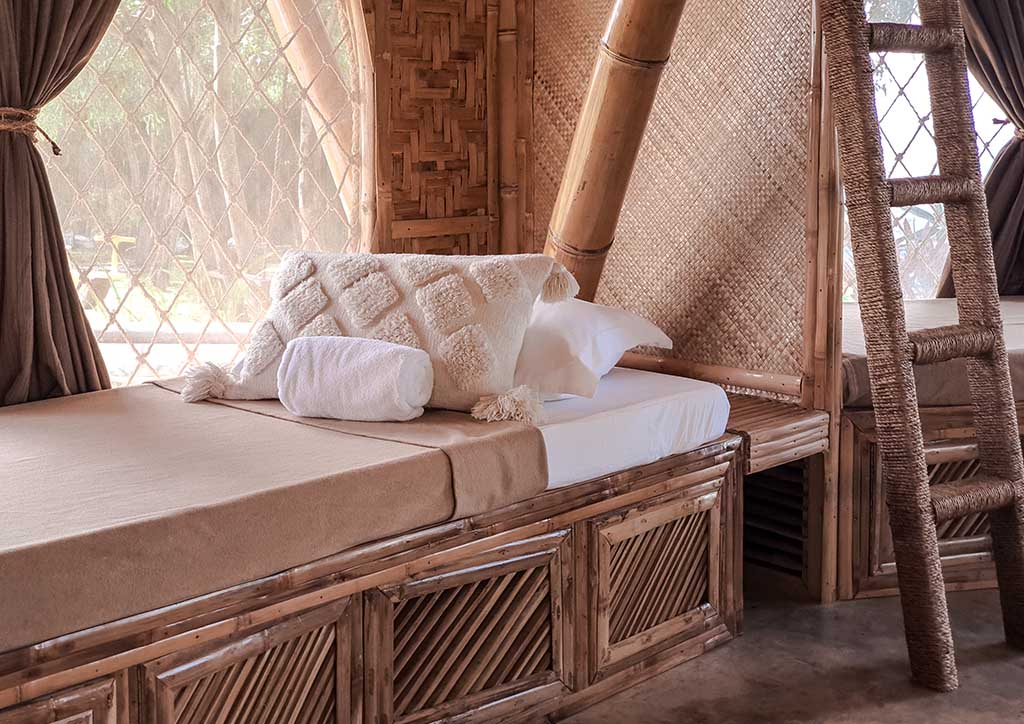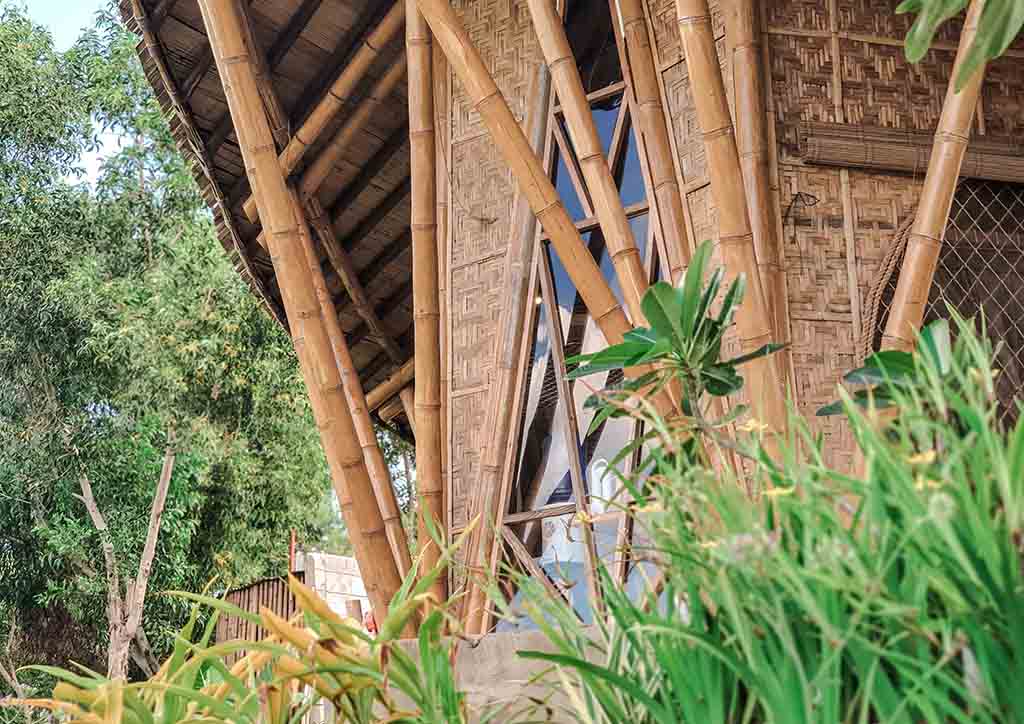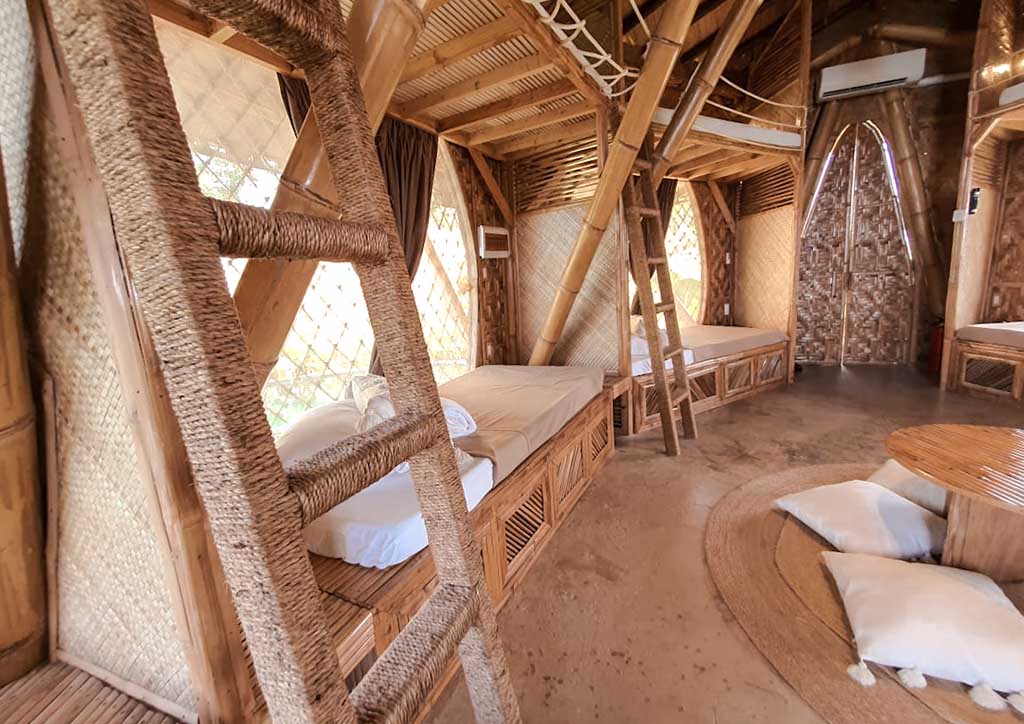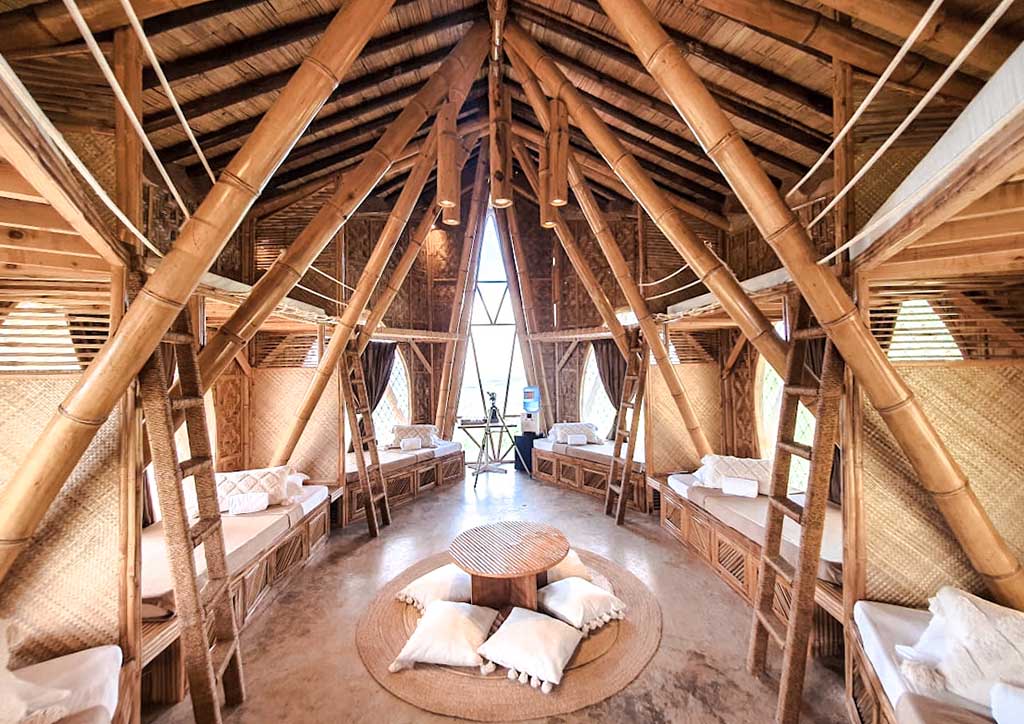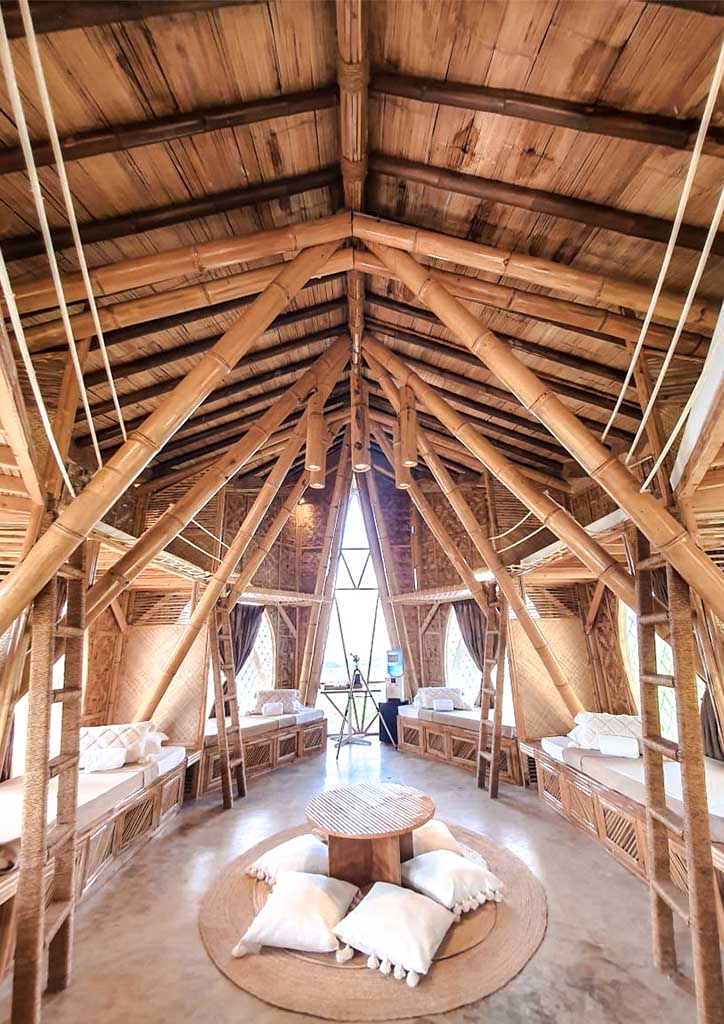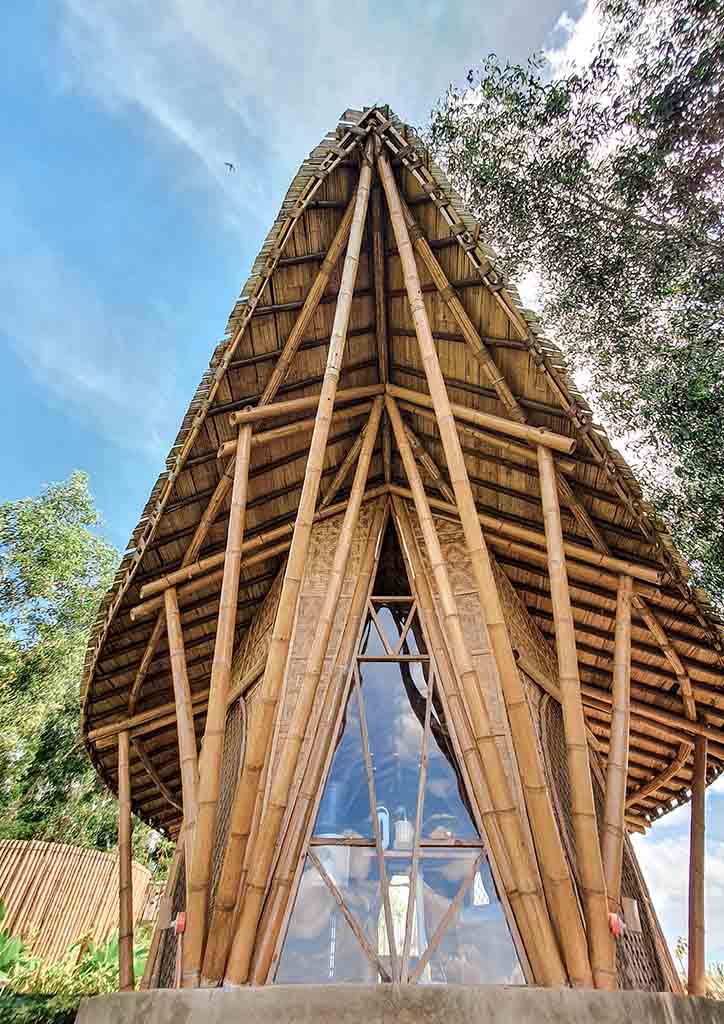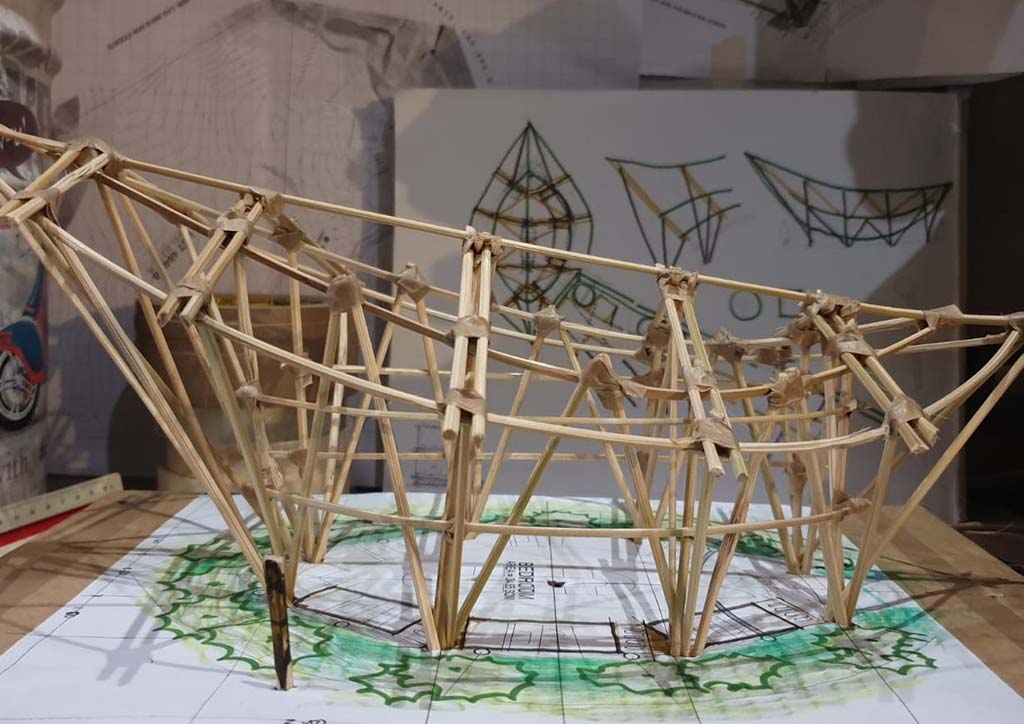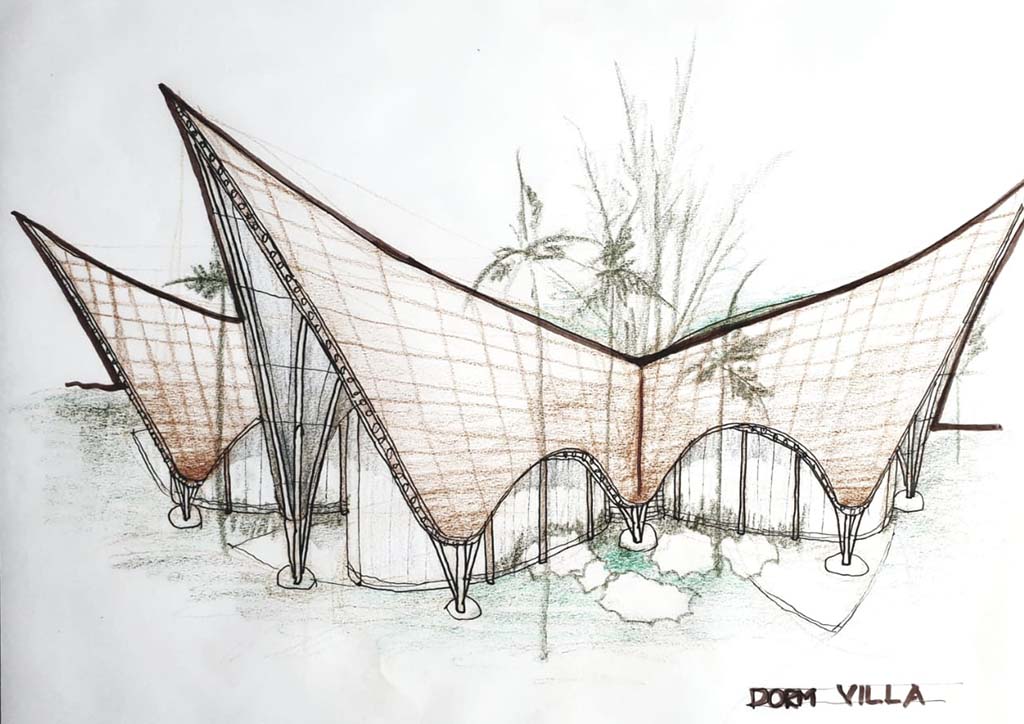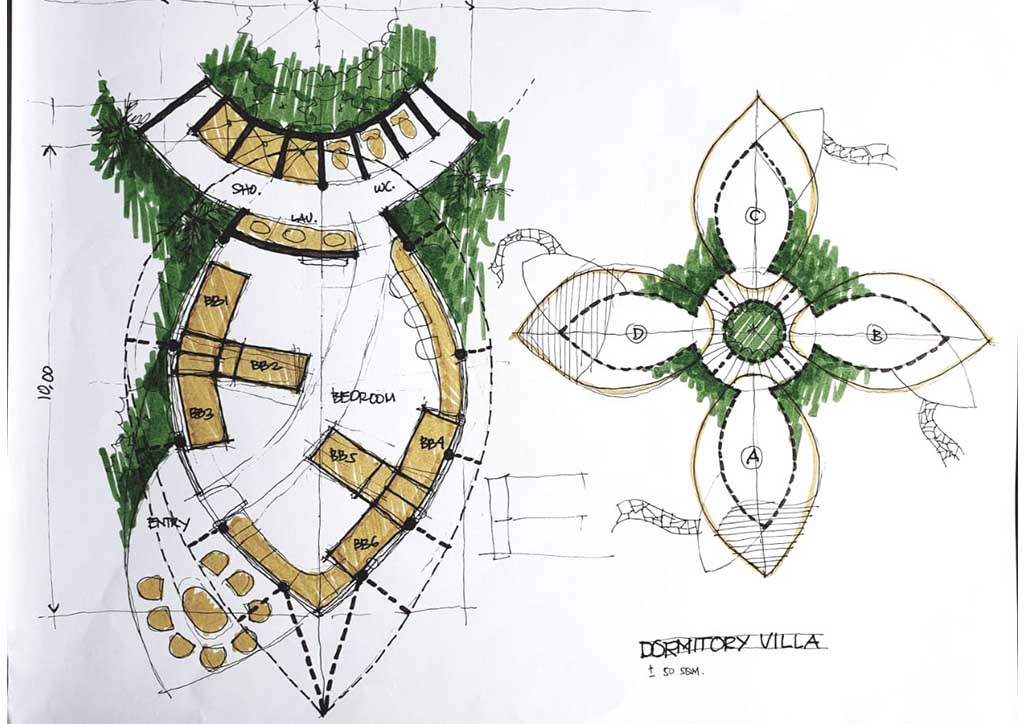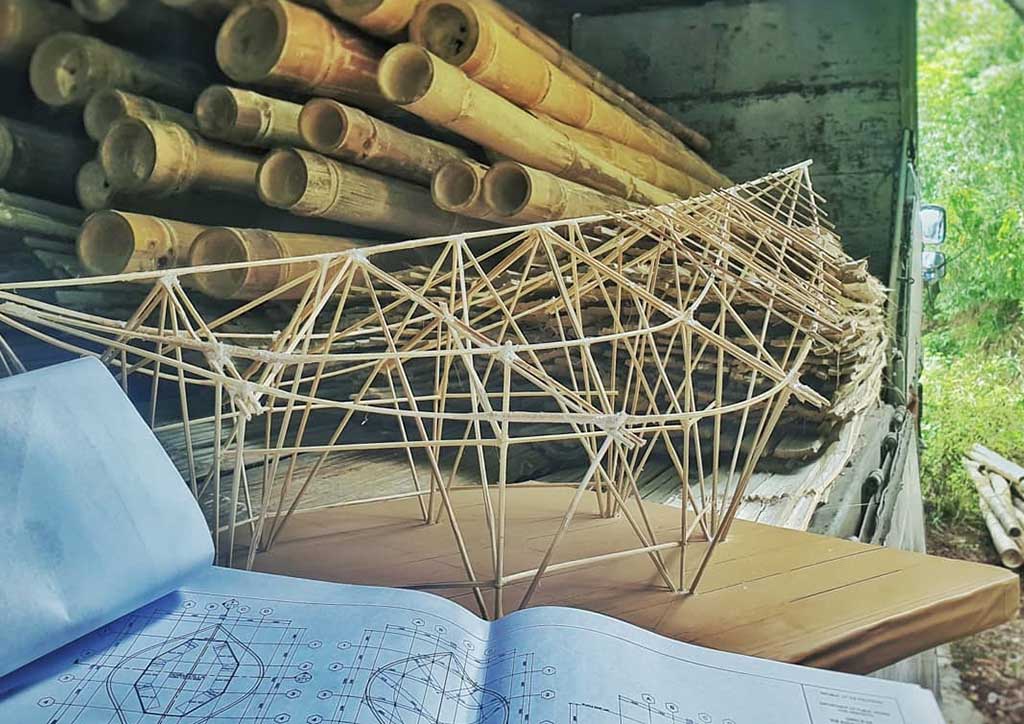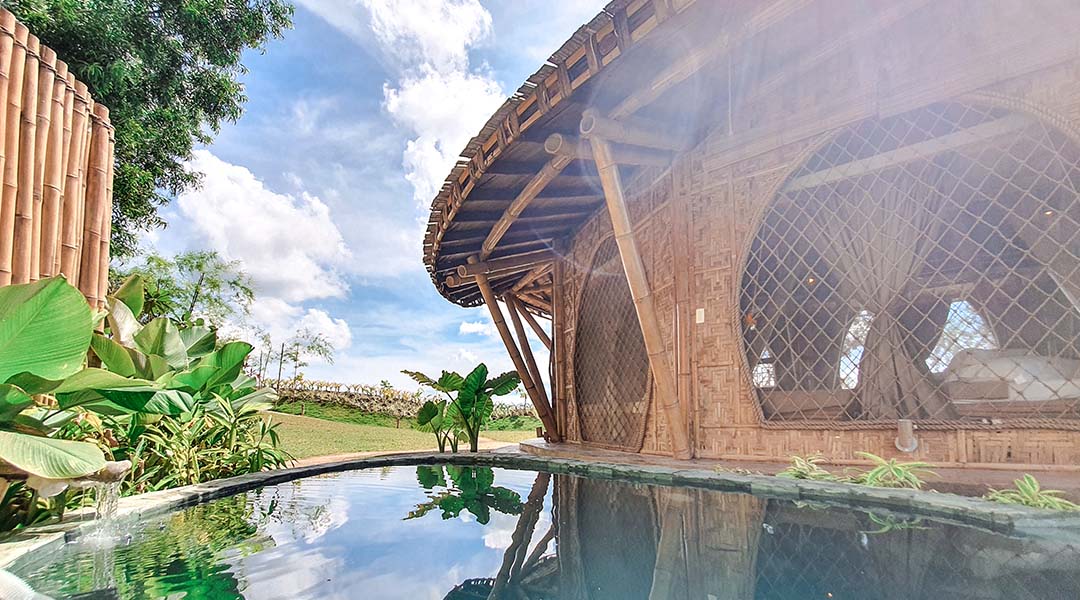
Dorm Villa of Wooloo in Cebu Continues to Explore the Endless Wonders of Bamboo designed by M+S Studio Co.
The use of bamboo as a construction material has always been innate in the country’s architecture and building industry. Being an archipelago that’s composed of more than 7,000 islands and possessing a tropical climate, the country is native to more than 60 species of bamboo and 20 of which are identified to be only growing in the country. What makes it a trusted and reliable material over the years are its proven qualities of strength, durability, flexibility, and sustainability. Aside from it, culturally Filipinos relate so much with bamboo. Described as “pliant like a bamboo”, Filipinos know how to deal with life’s adversaries through versatility and resiliency just like how the strong bamboo can yield along with strong winds.
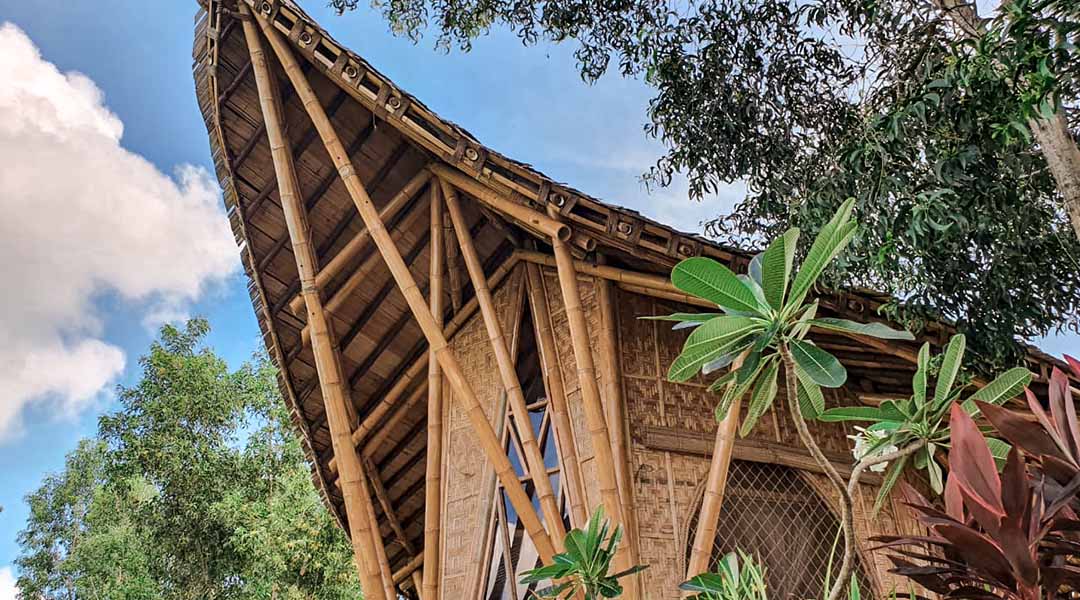
Couple designer, Architect Marvin Mariñas and Interior Designer Sheryl Geronimo-Mariñas of M+S Studio Co. had always had a great affinity to bamboo. According to them, the use of bamboo is already embedded in our culture. “Since we were young, we’ve seen bamboo being used for simple house construction and basic everyday use. However, we lacked the technical bamboo building knowledge and expertise. For this reason, I was inspired to join Bamboo U,” says architect Marvin.
In May 2019, Marvin did join Bamboo U in Indonesia and after which, he began the design and development of a bamboo resort in Cebu and also a personal project in Alhibé Farm. Prior to attending Bamboo U, the couple had attended the Permaculture Design Course at The Kul Kul Farm, also in Indonesia, which ignited the couple’s passion for combining the love for design and sustainable living.
M+S Studio Co.’s first bamboo structure project is the Dorm Villa situated at Wooloo Resort in Cebu. Completed in 2021, the structure occupies an area of only 40 sqm and it’s designed to accommodate travelers and backpackers of up to 12 people. The design of the villa is mainly inspired by nature’s elements. The leaf roof concept was derived from the bamboo villas in Bali that strongly suggest that resort ambiance while being in close proximity to the natural surroundings.
The Dorm Villa mainly consists of one big open layout plan. The beds or sleeping areas are all tucked at the sides with ladder access to the second level of the bamboo bunk bed. At the center is a small bamboo coffee table with floor cushions to serve as the guest’s lounge space. The wall openings with patterns of a “net” serve as windows and are provided with screens for that added protection from insects and mosquitoes. Series of fabric curtains are also added for better privacy.
The most common type of bamboo species used in construction here in the country is the Dendrocalamus asper and the Bambusa blumeana. The Dorm Villa is built up from these species which are both good for all the structural, aesthetic, and decorative elements. In the project’s case, the architects sourced the treated bamboo from Kawayan Collective, which is a local bamboo treatment facility, operated by another Bamboo U alumni. The materials had been shipped from the province of Negros to Cebu.
Initially, the process of construction was quite a challenge. The architects’ first mission was to transfer and relay the knowledge learned to the local workers who are very much used to working with conventional materials such as timber, steel, and concrete. The use of simple post and lintel structural system were explored and later the use of bundled splits was tested for the roof curves. In terms of connections and joint details, the timber-skilled carpenters translated their craft from doing it on timber into carving bamboo joints. At first, the progress was a bit slower compared to the conventional structure but as the workers got familiar with the system, the entire process became more efficient and easier to manage.
“Yes, the learning curve for our first bamboo construction was steep. There were many challenges. But the time we overcame the initial hurdles, building and the process now became more efficient. Our confidence in exploring new design possibilities continues to grow. Building with bamboo in our context required a change in mindset for our workers, and extra effort in convincing our clients that building with bamboo is feasible, just like the success of the Dorm Villa,” shares the Mariñas.
Article Credits: Drawings and images courtesy of M+S Studio Co. ©

